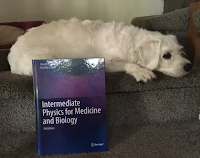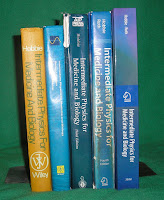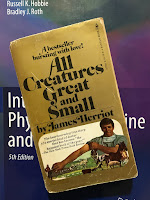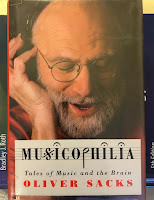In Chapter 13 of
Intermediate Physics for Medicine and Biology,
Russ Hobbie and I describe a
logarithmic scale for
sound intensity: the
decibel. In general, an increase in intensity is perceived as a greater
loudness (although this relationship is surprisingly complex). Is there an analogous relationship between frequency and
pitch? Yes! Loudness is determined using a
logarithmic scale with a base of ten, whereas pitch is measured using a
logarithmic scale of base two, because a doubling of the frequency corresponds to raising the pitch by one
octave. Those familiar with music are accustomed to associating different pitches with different notes in a musical
scale. Most instruments are tuned using the
equal tempered scale, dividing an octave into twelve equal logarithmic steps. One step, called a
semitone, corresponds to the difference in pitch between, say,
F and
F-sharp. The fractional change of one semitone is 2
1/12 = 1.0595, or an increase in frequency of roughly 6%. This frequency shift is so important that it is expressed by a special unit: one semitone is equal to 100
cents. The cent is to pitch as the decibel is to loudness. Doubling the intensity corresponds to an increase of 3 dB, whereas doubling the frequency corresponds to an increase of 1200 cents.
How finely can the human ear resolve pitch? In other words, if you play two pure tones one right after the other, by how much must their frequency differ for you to notice that they are indeed different? A typical listener can detect a change of about 5 cents, leading to the rule of thumb that you can hear about a nickel’s worth of difference. Try testing your own pitch perception online
here. When I tried, I could always detect a difference of 50 cents (tones of 440 and 453
Hz, presented one after another; I assume this is a control used by the testing software, because the difference is obvious). I could never detect a difference of 4 or 6 cents (440 compared to 441 or 441.5 Hz). I had inconsistent results with 8 and 11 cents (440 compared to 442 or 443 Hz); sometimes I perceived slightly different tones, and sometimes I didn’t. Ten cents is a reasonable approximation to my
just noticeable difference, which confirms what I have always suspected: I have poor but not pathological pitch perception. When playing the tuba in my high school band, the director often had us “tune up” relative to a standard note, typically played by the first clarinet. I always had trouble with this task; he had to tell me if I was sharp or flat. Poor pitch perception has its advantages: you don’t need to hire a
piano tuner! Pity my poor wife—my only audience, other than my dog Suki—but my wrong notes are probably more bothersome than the out-of-tune piano, so spending for a piano tuner would not help.
Humans can hear pitches from roughly
20 to 20,000 Hz. Because 2
10 is about 1000, humans can hear frequencies that range over roughly ten octaves, or 12,000 cents, and therefore you (but not I) can distinguish about 2400 different tones. A
piano keyboard plays notes 28 to 4186 Hz, which is a little more than seven octaves, or roughly 8700 cents (87 semitones between the 88 keys). Sometimes changes in frequency are measured in
millioctaves: 1 mO = 1.2 cents. Although the cent is not a metric unit, I still worry that the
SI police, who insist that all things centi- are going out of fashion compared to all things milli-, will demand we start using the millioctave. I hope not.
If two tones are played at the same time, rather than one after another, you can perceive small differences in pitch using
beats. Consider the
triginometric identity
If frequencies
A and
B are similar, then their sum consists of a carrier frequency equal to the average of the two original frequencies modulated by the difference of the two frequencies. For instance, if you have a tone corresponding to
concert A (440.00 Hz) and another tone out of tune with concert A by 3 cents (440.78 Hz), when played together the sound consists of a tone having frequency 440.39 Hz modulated by a sinusoid that gets louder and softer with a frequency of 0.78 Hz (or a period of 1.3 seconds). Your ear can’t tell that the pitch of the carrier tone is different from concert A, but it can detect the variation in loudness caused by the beats. You can hear beats generated online
here.
If several tones have widely separated frequencies, your ear (or more properly, your brain) detects distinct notes played together; a
chord. If two tones have nearly the same frequency (like in the example above), you hear a single tone with modulated amplitude; beats. For intermediate frequency differences (say, between a note an octave above concert A, 880 Hz, and a severely out-of-tune A at 897 Hz, a difference of 17 Hz or 33 cents) you hear neither a chord nor beats. Instead, your brain perceives
dissonance. A
London police whistle generates frequencies of 1904 and 2136 Hz, a difference of 232 Hz or more than 200 cents. It sounds annoying.
Try it yourself.
The frequency ratio between a
C and
G (a
perfect fifth) should be 3:2, which is 702 cents. However, in equal tempered tuning the shift between C and G is 700 cents. This difference of 2 cents is indistinguishable to all but the best ears. The
major third is more of a problem. It should have a ratio of 5:4, or 386 cents. In the equal tempered scale, a third is 400 cents, off by 14 cents, which a good ear can hear. If all these tonal relations are different than what they would be in
just intonation, then why do we use an equal tempered scale? It allows us to
change keys without retuning the instrument. But we pay a price in that a
major chord does not have precisely the desired 4:5:6 frequency ratio.
Pythagoras must be turning over in his grave.
Both pitch perception and
color vision arise from the physics of frequency detection. But the tones we hear and colors we see are determined by more than just physics. There is a lot of information processing by the brain, which leads to many fascinating and unexpected results including surprising pathologies. To completely appreciate how we perceive frequency, you also need to understand the brain.


































